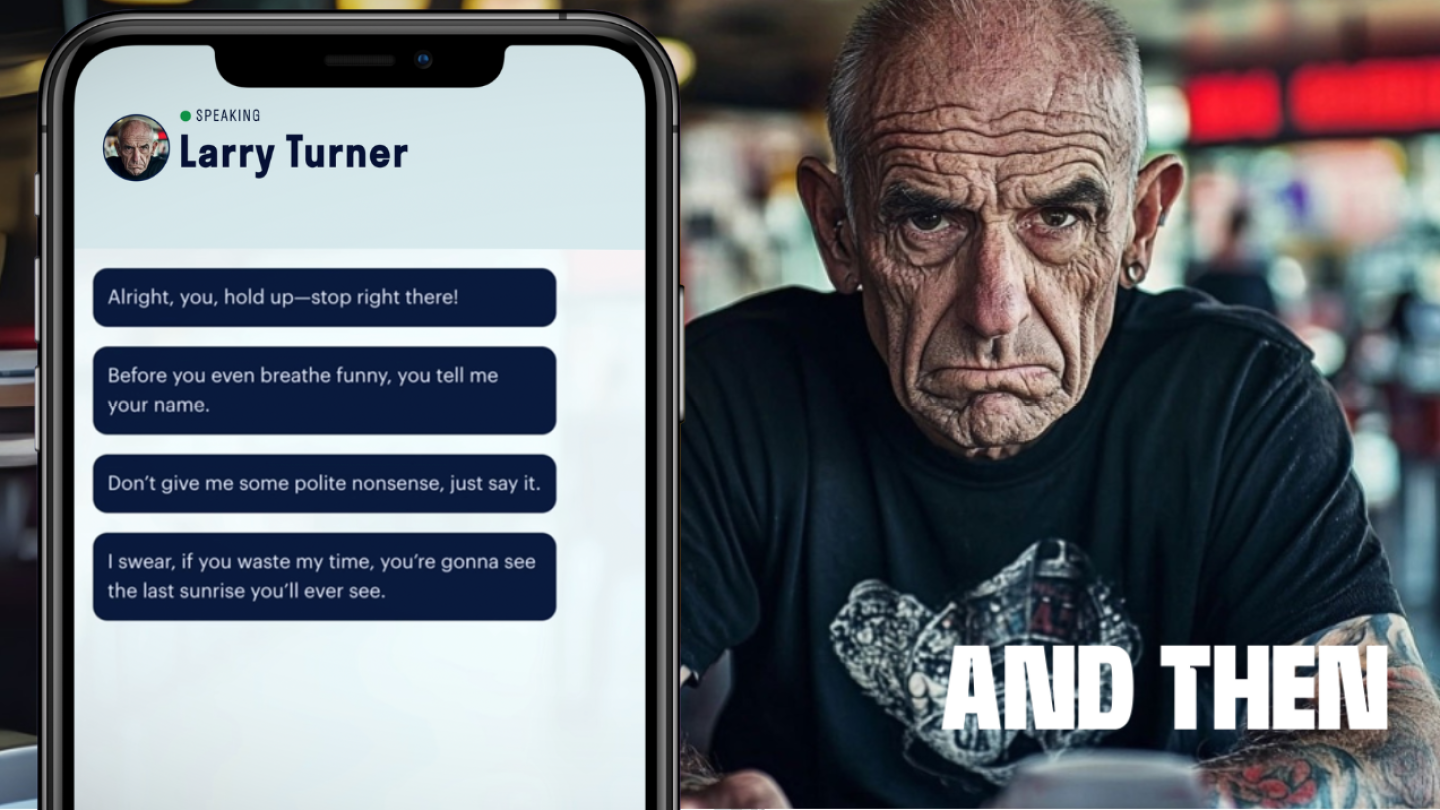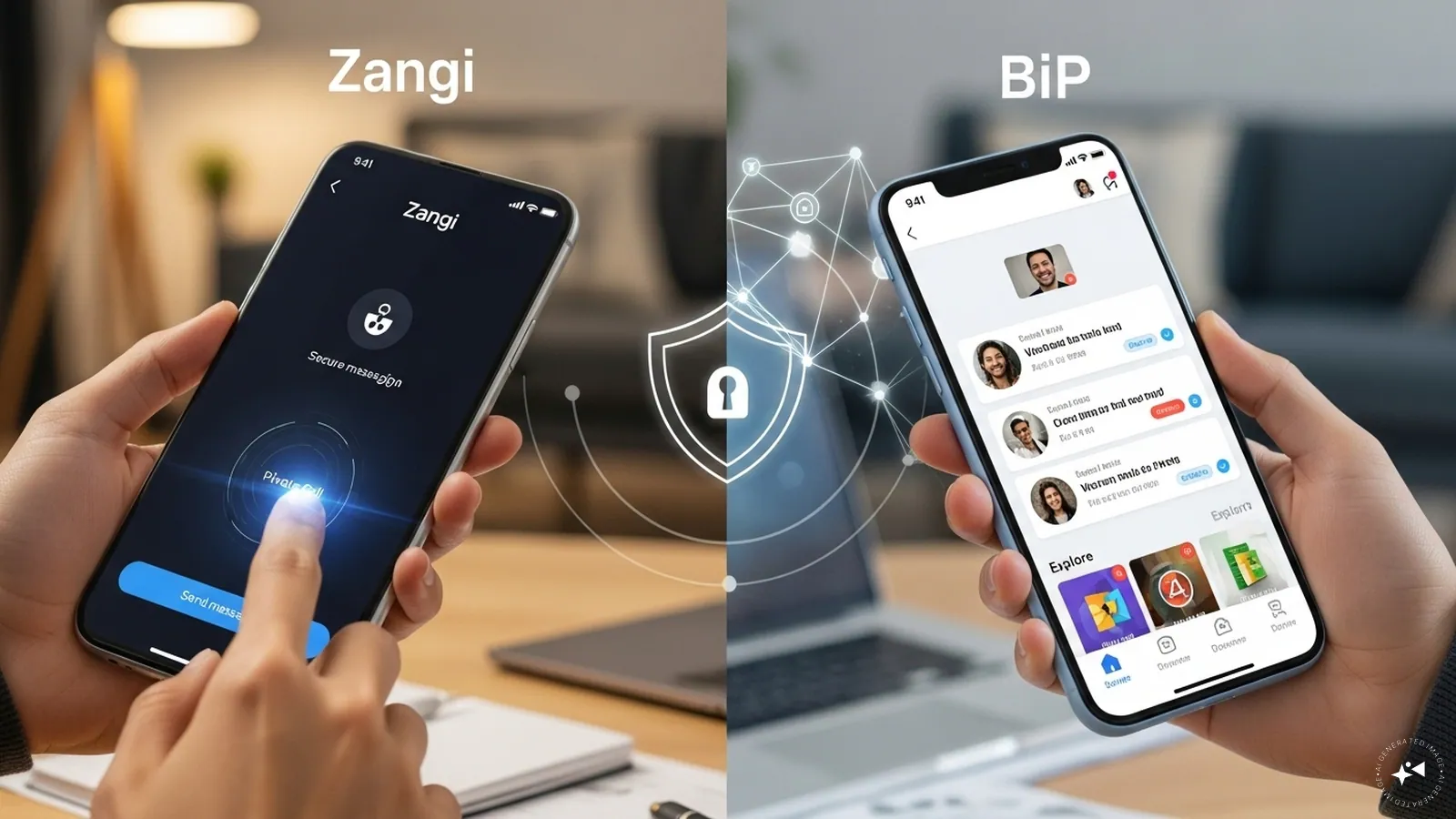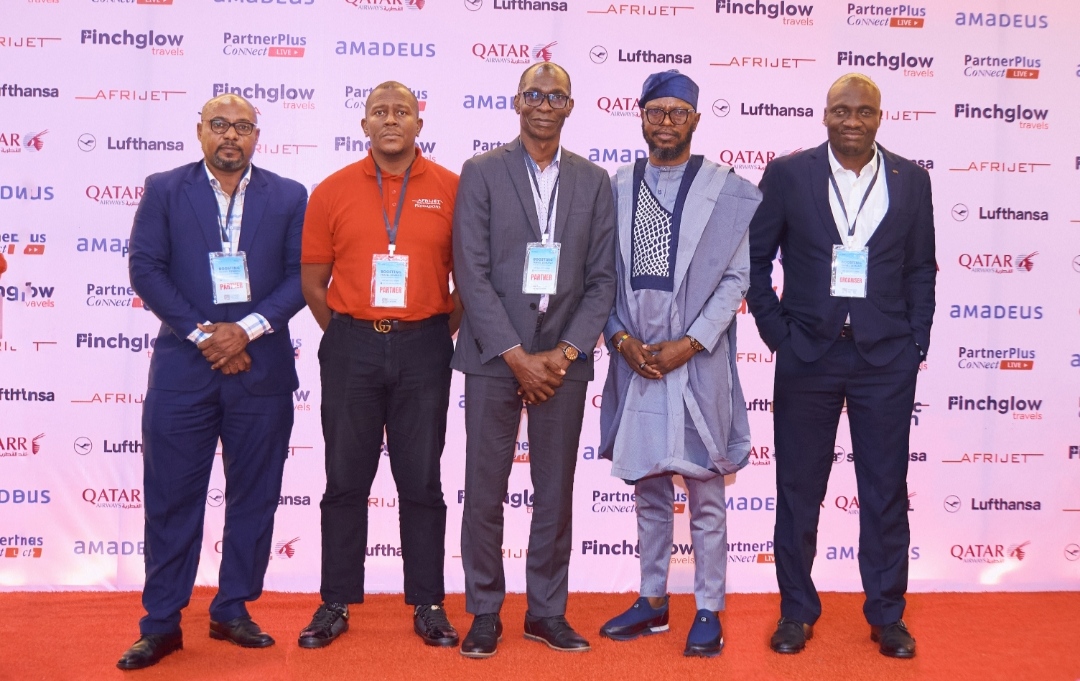
Imagine you are sitting in a diner, and a man walks in with a bomb. You have five minutes until the police arrive. Can you persuade him to surrender?
It’s a classic movie plot, cliché even, but of course, you can’t talk back to the movie, it is a one-way medium. Generative AI technology, however, can turn that experience into something much more interactive.
A pair of TV veterans, working with a former journalist and technologist, are betting that while the technology may be nascent, the time to take that leap is now.
Gavin Purcell, a former late night TV producer for NBC’s Late Night and The Tonight Show, Kevin Pereira, the former host of the G4 series Attack of the Show, and Rex Sorgatz, a former editor for Wired and MSNBC, have launched a new company called And Then, which seeks to leverage human creativity and AI tools to create an entirely new form of interactive entertainment.
And Then is launching with a handful of interactive experiences created by the founders, including a take on Password or The $100,000 Pyramid, with users having to feed clues to an AI-powered “celebrity” partner “La La Stardust;” and an experience where users need to persuade an alien manning a docking bay to allow their cargo ship to land. Each experience has an author or byline, allowing users to seek out creators that resonate with them.
The experiences are audio-based (though there is a text mode for those who want it), with users speaking to the AI characters to try and accomplish the goal or task at hand. The result is surprisingly emotional, with the rush of having La La Stardust guess the right word, or a sense of relief when “Larry” disengages the bomb in the diner.
“The thing that’s kind of engaging about this idea, is you are getting into a conversation,” Purcell says. There is something weird about the audio part of it all. When you are just talking, it makes it feel like it’s okay to pretend, it’s a little childlike in a weird way, you start to kind of buy into this thing. So I think for us, what we thought about is, what are interactive moments that could be really interesting? The goal with these is, ultimately, multi-chapter narratives which will be something we want to do.
“My thesis about this is that younger people, who are already more performative when it comes to media, they’re already on camera a lot more, is that I think they’re going to want to be more active and more participatory in things,” he adds.
And, surprisingly for a startup built on AI technology, humans are at the center of what they are building. Each game, world, and character is created by a person, the rules are set by the creator, the AI is in service of the story.
It’s a contrast to the giant LLMs, which are capable of a lot, but require a lot of work on the user’s part to get there.
“I think that’s the part that kind of like people are missing right now, when something is available and it’s so big and so wide open, it’s only once you start putting boxes on it that it starts to reveal itself as content,” Purcell says.
Take the alien docking experience. When The Hollywood Reporter recently played it, it was a bribe of freshly-baked Levain cookies that ultimately secured passage to the port. But everyone else’s experience will be uniquely their own, by design.
“Kevin made that in four hours, it was his idea, and I don’t think an AI just coming up with that on its own would have been nearly as fun,” Purcell says. “It may have gotten somewhere, but it’ll start to feel a little cliched.I am a big believer that sure, AI will get better at making stuff, but I still think the human individual story and the spark will add something to it for a very long time. I think that’s one area where even if the tools get great, the storytelling that a person has based on their background and their life and their experience is always going to bring something unique to it.”
The goal is to have a regular cadence of experiences, some wholly original and some built on a central premise. The game show, for example, can have fresh clues and contestants every day, or Change My Mind can see the user debate an AI competitor on a fresh topic that changes frequently. The company has raised some capital from the a16z speedrom accelerator program, but are early in the process of seeking investors, while also plotting how to monetize And Then.
Advertising may be a part of that, as could be subscriptions (i.e. in a multi-part story, the first few installments could be free with future versions payalled).
“One thing that’s really interesting about the game show, and I think there’s a real fine line to thread here, is that we can deliver in an experience an advertising message that feels like it’s very much part of the experience and doesn’t feel like you’re jumping out into having a host read something that’s a minute long,” Purcell says. “The host of that game show could easily say, today’s show is brought to you by x, and it’s like a mini thing that’s part of a game that you can still deliver for free, but I think you can do that in a programmatic, interesting way that makes it feel like it’s immersive.”
Purcell frames the emergence of AI tech as part of a longer-term trend in media. Just as platforms like YouTube and TikTok have democratized how content gets distributed, he believes that AI tools will democratize how content gets created. But they also want creative people to jump in the pool and stretch their storytelling muscles.
“We want the talent aspect of this to feel open to people that have done creative work in other places,” Purcell says. “I know just because it’s AI, that’ll turn off a ton of people in the first place, but the goal is really how to put the talent first in a big way.”



